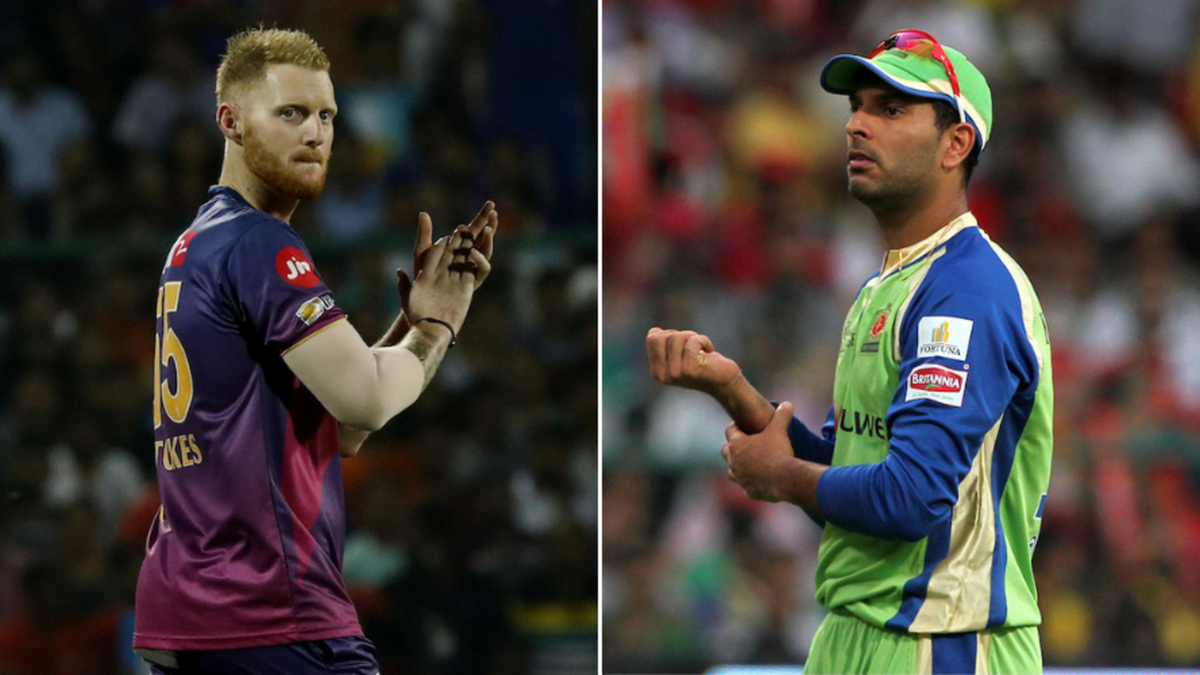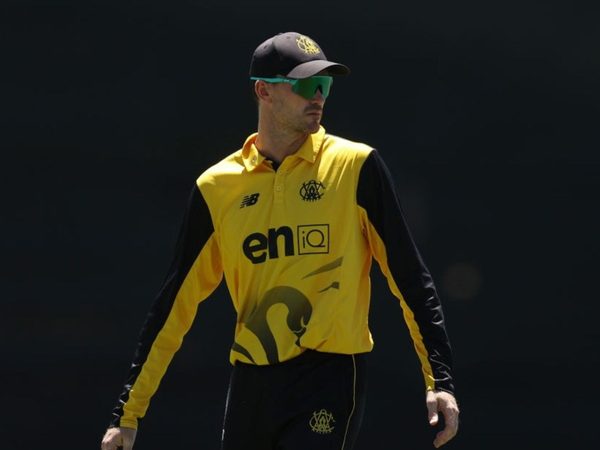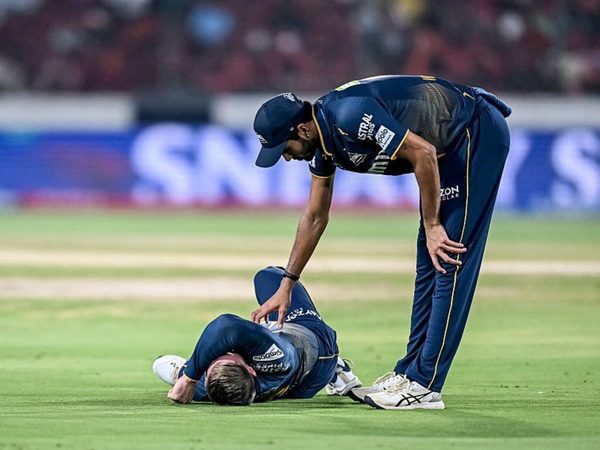
Aadya Sharma recalls the most expensive players in the history of IPL – while some turned out to be inspiring acquisitions, others weren’t as profitable.
Aside from the actual tournament, there’s considerable interest every year on the IPL auctions, a spangled event that turns cricketers into overnight millionaires. For years, experts have tried to break down auction trends and patterns, but each season ends up with a few astonishing buys, some of whom end up breaking the bank.
Note: The list contains the most expensive players from each IPL auction, and doesn’t include players who were retained outside the auction.
MS Dhoni (Chennai Super Kings, IPL 2008)
414 runs @ 41.40, strike-rate: 133.55
It is said that MS Dhoni almost went to Mumbai Indians in the very first auction before a smart ‘arithmetic’ move made him Chennai Super Kings’ first-ever captain. Less than a year after leading India to the T20 World Cup title, Dhoni took Chennai to the cusp of a maiden title win, losing to Rajasthan Royals in the final over of the tournament. It signalled the beginning of his legacy with the Super Kings that runs till today, where he enjoys a superstar-like status among the franchise’s supporters.
On a personal front, Dhoni set the tone with a strong batting performance, scoring 414 runs, including two fifties.
Verdict: Hit
Andrew Flintoff (Chennai Super Kings, IPL 2009)
62 runs @ 31.00, strike-rate: 116.98; 2 wickets, economy: 9.54
Two superstars from England made their way into the IPL 2009 auction and instantly struck gold – Flintoff and Pietersen bagged identical $1.5 million contracts, but both walked away with forgettable maiden campaigns.
Flintoff was supposed to be CSK’s talisman, an explosive all-rounder who could have thrived in South Africa’s terrains, but the association lasted just three games before Flintoff limped off with an injury.
Verdict: Miss
Kevin Pietersen (Royal Challengers Bangalore, IPL 2009)
93 runs @ 15.50, strike-rate: 109.41
Kevin Pietersen doubled the number of appearances by Flintoff, but in six innings could gather only 93 runs. To further compound problems, Pietersen was dropped midway through the season as captain and replaced by Anil Kumble, who helped resurrect the season and lead the side to the final.
Verdict: Miss
Shane Bond (Kolkata Knight Riders, IPL 2010)
9 wickets, economy: 7.23
It’s a pity that the IPL came at the back end of Shane Bond’s career – his blistering four-over spells could have been a phenomenon in the tournament. However, much like the rest of Bond’s playing time, his IPL stint was brief and impactful, but not exactly fulfilling. A vicious bumper sidelined MS Dhoni with an elbow injury for ten days, and the wickets column kept continuously ticking upwards, but the spells couldn’t lift Kolkata Knight Riders above a sixth-placed finish. It wasn’t perhaps the outing he expected, and he retired from all cricket the following year.
Verdict: Miss
Kieron Pollard (Mumbai Indians, IPL 2010)
273 runs @ 22.75, strike-rate: 185.7; 15 wickets, economy: 7.40
A 23-year-old Pollard was bought for the exact sum as Bond – $750,000 – and has since become one of the top-most all-rounders in the IPL. It began exactly ten years ago from today, when Pollard’s raw talents were given a platform in Mumbai Indians’ middle-order. In his first IPL season, Pollard seamlessly inducted himself at the team’s core, scoring 273 runs at a strike rate of 185.71 and picking up 15 wickets. Mumbai haven’t let go of him since.
Verdict: Hit
Gautam Gambhir (Kolkata Knight Riders, IPL 2011)
378 runs @ 34.36, strike-rate: 119.24
Looking for a complete overhaul, Kolkata Knight Riders brought in Gautam Gambhir and quickly put him at the helm of affairs. It proved to be an inspiring move in the long run, as Gambhir became the brains of a hugely successful franchise, doubling up as their anchor at the top. The platform was laid in his first year at the franchise, where he averaged over 34 with the bat and led them to third place. A year later, KKR won their maiden title under Gambhir.
Verdict: Hit
Ravindra Jadeja (Chennai Super Kings, IPL 2012)
191 runs @ 15.91, strike-rate:126.49; 12 wickets, economy: 7.80
When Kochi Tuskers Kerala’s contract was terminated, all-rounder Ravindra Jadeja, one of India’s most promising youngsters at that time, was up for grabs. His all-round skillset seemed well suited for the T20 format, shades of which he had already showcased for India.
It turned out to be an association that continues to this day, broken only for a couple of years when Chennai were suspended in 2016 and 2017. In his debut season, Jadeja blew hot and cold, scoring 191 runs @ 15.91, and picking up 12 wickets, five of which came in a single game against Deccan Chargers. Beyond the numbers though, it was an acquisition that became an integral part of CSK over the years.
Verdict: Hit
Glenn Maxwell (Mumbai Indians, IPL 2013)
36 runs @ 18.00, strike-rate: 133.33
There has been much talk about Glenn Maxwell’s paltry returns this year, another season where he has failed to fire despite heavy expectations. In 2013, when Maxwell, fresh into international cricket, was acquired by Mumbai Indians for INR 5.3 crore, he made only a brief appearance. As Mumbai’s campaign took shape and others nailed down the overseas slots, Maxwell ended with just three caps to his name, one more than the previous year, his maiden season. Next year, he was let go before the auction.
Verdict: Miss
Yuvraj Singh (Royal Challengers Bangalore, IPL 2014)
376 runs @ 34.18, strike-rate: 135.25; 5 wickets, economy: 8.25
While his India career tailed off as the decade unfolded, Yuvraj Singh commanded some of IPL’s biggest paychecks in the 2010s, twice becoming the auction’s most expensive player. In 2014, Yuvraj went RCB’s way, earning INR 14.5 crore for the season, the then -highest amount spent on a single player. Many wondered if RCB had gone overboard with the deal.
It wasn’t a watershed year, but he still played his part with a few vintage knocks, including a 38-ball 83, his highest T20 score, against Rajasthan. As a bonus, he plucked five wickets, four of which came in a single game. A hit, we’d say, but only just.
Verdict: Hit
Yuvraj Singh (Delhi Daredevils, IPL 2015)
248 runs @ 19.08, strike-rate: 118.10; 1 wicket, economy: 8.00
Next year, Yuvraj was equally in demand, going for an even higher sum. However, the move didn’t pan out as Delhi Daredevils would have hoped – Yuvraj’s numbers were middling, perhaps the first indication that the all-rounder’s renowned white-ball skills were on the decline. The wickets column dried up too, and Yuvraj was axed after just one season.
Verdict: Miss
Shane Watson (Royal Challengers Bangalore, IPL 2016)
179 runs @ 13.76 strike-rate: 133.58; 20 wickets, economy: 8.58
The year he retired from international cricket, Watson also became the season’s most expensive player, but he only contributed a small part in RCB’s run to the final. A best score of 36, and an economy rate of 8.58 made for jarring figures, but Watson kept chipping away with wickets every game, ending with 20 in his bag. He stayed put the following year, but the returns dried up further. He managed just 71 runs at 11.83 and claimed only five wickets.
Verdict: Miss
Ben Stokes (Rising Pune Supergiant, IPL 2017)
316 runs @ 31.60, strike-rate: 142.98; 12 wickets, economy: 7.18
Pune were willing to splurge a fortune on Stokes, and for good reason. Over the previous few years, Stokes had given a ready account of his game-changing white-ball abilities.
He repaid the faith – in his debut IPL season, Stokes tonked 316 runs at 31.60, and made matchwinning contributions in a number of games, with stunning catches, big hits and vital wickets galore. The best account of his invaluable batting was when he walked in at 10-3 and scored a 63-ball 103. A comprehensive all-round show.
Verdict: Hit
Ben Stokes (Rajasthan Royals, IPL 2018)
196 runs @ 16.33, strike-rate: 121.73; 8 wickets, economy: 8.18
With the Pune franchise dissolved in 2017, Ben Stokes found a new home at Rajasthan, where the franchise was just as desperate to recruit his services. RR nearly matched his old price, and Stokes took home INR 12.5 crore, but the results weren’t as spectacular.
Stokes managed just 196 runs at 16.33 and gathered only six wickets in nine games, looking a shadow of his older self. Next year, the team retained him for the same salary, but his impact is still yet to reach 2017 levels since.
Verdict: Miss
Jaydev Unadkat (Rajasthan Royals, IPL 2019)
10 wickets, economy: 10.66
Unadkat’s stocks grew exponentially after a breakthrough 2017 season with Rising Pune Supergiant, where he picked 24 wickets. Rajasthan Royals bought him the next season as the highest-priced Indian player, only to let him go and buy him for higher amount the following season. As it turned out, Unadkat wasn’t able to recreate the same magic, giving away runs aplenty.
Verdict: Miss
Varun Chakravarthy (Kings XI Punjab, IPL 2019)
0 wickets, economy: 11.66
Picked out of relative obscurity, Chakravarthy is perhaps the most low-profile name on the list, but garnered significant attention after his exploits in the Tamil Nadu Premier League, a domestic T20 competition. Kings XI Punjab didn’t hesitate in backing the ‘mystery’ spinner, but he turned out to be a damp squib, playing just one game and giving away 35 runs.








